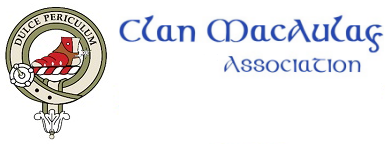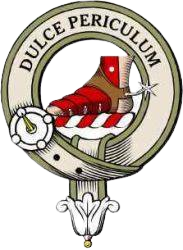
Frequently Asked Questions (FAQ)
MacAulay Genealogy and DNA
This page is “under construction”. Check out the Q&A below and help our Clan Genealogists and DNA specialists build out the page by asking your questions HERE. Come back often to find the answers and watch new videos as we add them!
JOIN the Clan MacAulay for personalized help regarding genealogy and DNA testing.
CONTACT our Clan Genealogists and DNA specialists with questions.
VIEW our Genealogy & DNA slide presentation
LISTEN TO OUR YouTube VIDEOS (10 minutes or less) REGARDING FAQs.
Question: My ancestor’s name is not spelled “MacAulay”. Am I related? Can I be a member of Clan MacAulay?
Answer: All variant spellings of “MacAulay” are welcome to join Clan MacAulay. The Clan does not represent any singular/specific MacAulay family. There are dozens of distinct and paternally unrelated families in Ireland and Scotland with the surname MacAulay or one of its variants. Anyone with a connection to any of these families is welcome to join the Clan MacAulay Association and participate in various activities and events. In fact, in keeping with the traditional clan membership practices (see the Q&A on Clans below), we welcome members who simply identify with the Clan for various reasons.
Before consistent spelling was “a thing”, names were recorded in writing by people who could only go by the sound of the name spoken by an individual. That individual may not have known how to spell or write their own name. Consequently, we have many different spellings for the same surname. A person’s accent or way of pronouncing the name may have played a part in how a name was spelled and recorded in writing.
The important thing to remember is that spelling is inconsequential. Clan MacAulay welcomes you and encourages you to tap into our clan genealogists and DNA specialists.
We look to help understand the unique origins of each of the families, as well as to help find links to people who have migrated away from their point of origin. This is being done with Y-DNA testing to reveal the true story of the family, as opposed to reliance on old books or genealogies/accounts found on the internet – sources which, too often, are not documented with actual records. That’s why it’s so important to have a male MacAulay relative available to get a Y-DNA test.
Our Y-DNA testing is done at Family Tree DNA (FTDNA). If you’re interested in finding out which line of McCalla/McCauley/Macaulay/McAuley, etc, you descend from, let us know. We can send information on testing. There are several MacAulay-specific group projects at FTDNA. Sample surname spellings in one of these groups include:
Good Ireland Macaulay
Macauley MacAuley Macauley
Mc Cauley McAuley McCauley
McCaulley McCawley McColley
McMath Mize Sadler
You will notice that some of these names don’t look like any form of MacAulay. Yet, ALL the men in this group have a common paternal ancestor, discovered by their Big Y-700 tests (advanced Y-DNA testing). Having a non-MacAulay surname but having Y-DNA matches with MacAulay men usually happens because of unofficial adoptions, out-of-wedlock births, etc. Sometimes it’s because people just choose to change their name, for whatever reason.
Question: What is the history of the MacAulay surname?
Answer: It’s important to understand that surnames in Scotland and Ireland didn’t become common until the 1400s-1600s (depending on the exact location…those further north tending to be named later). Most arose simply because of patronymics and those families would have had an Aulay as head of the family. Other times various unrelated men in the same location took on the same surname as a local landowner in a sense of fealty or loyalty.
It is very common to have multiple paternally unrelated families of the same surname from the exact same region/location/parish. As an example, Y-DNA testing has now proven that there were at least 5 separate Macaulay families living on the Isle of Lewis alone, and very likely more will be found as we continue testing MacAulay men. Furthermore, there are unrelated Macaulay families living on neighboring North and South Uist, and unrelated families of MacAulays living in mainland Scotland (yet we have now also proven that some MacAulays from Gairloch, Ross-shire, are descended from a MacAulay from the Isle of Lewis). It’s a very common name due to the naming patterns of people living there well before surnames began. Not all of these families are paternally related, and the common surname is simply a coincidence. In short, not everyone with a surname of MacAulay (any spelling) is related AND those with an unrelated surname may be related!
Question: What is a “clan” and what is its historical background?
Answer: It’s important to understand that the clan systems of Ireland and Scotland were unconnected, each with their own origins, history, and usage. The word ‘clan’ derives from the Gaelic word ‘clann’ or ‘clanna’ for children, and describes a close-knit group of relatives. However, you didn’t need to be related to the clan chief to be considered a part of the clan. Anyone who pledged their allegiance to the chief could use the clan name as their own, and this included those who worked for the clan or needed protection. Thus, everyone in a clan wasn’t necessarily a blood relation.
Irish clans were often based on pre-surname population groupings in specific regions, where one division of it would become more powerful and attained a level of royalty in Ireland. The Irish did not use tartans or wear the kilt. This clan system was essentially ended in the mid 16th century when the England conquered Ireland, and many Irish chieftains were granted new titles such as Baron and Earl. There was a transition to English Common Law in regard to how title and property were handled going forward, in order to prepare for major migration of British during the Ulster Plantations of the 17th century.
Scottish clans were mainly formed in the Highlands of Scotland, and to a small extent in the Borders region of southern Scotland (though treated differently). This came about as the Anglo-Norman feudal system was brought to parts of Scotland beginning in the 12th century and adapted to the pre-existing territorial holdings of local war lords. These men had varied origins, such as Norse-Gaelic, Gaelic, Norman, and even Flemish. The majority of people living in Scotland at that time (and today) were in the Lowlands, and never had any connection with clans. Highland “great” kilts originated in the late 16th century as large full-length garments, but the small kilt recognized today did not come into use until the late 17th century. The tartans used were a function of the local weavers and the styles they made, which became associated with the clan in the area.
The National Trust of Scotland has an excellent podcast on the origins and history of the Scottish Clan in Season Five, “Clans: from kinship to capitalism” You will find it HERE.
Question: What is a “Sept”?
Answer: A sept is an English word for a division of a family, especially of a Scottish or Irish family. In the context of Scottish clans, septs are families that followed another family’s chief. These smaller septs would then comprise, and be part of, the chief’s larger clan. A sept might follow another chief if two families were linked through marriage; or, if a family lived on the land of a powerful laird, they would follow him whether they were related or not. Bonds of manrent were sometimes used to bind lesser chiefs and his followers to more powerful chiefs. Septs were based on specific clans connecting themselves to specific families and not an all-encompassing concept. Having a certain surname does not mean you are connected to a specific family/sept of the same coincidental surname and depends on the genealogy of your family.
Question: What is a “tartan”?
Answer: In many countries today, the pattern of interlocking stripes called a tartan is often mistakenly known as “plaid.” Plaid actually comes from the Gaelic word for a blanket, and is specifically used in the context of Highland dress to refer to a large length of material. The original kilt was known as the “belted plaid” and consisted of a length of cloth (basically a large blanket) that was gathered and belted at the waist. The plaids were most often made from a tartan cloth, and so the confusion between the two terms is understandable.
Tartan refers to the pattern of interlocking stripes, running in both the warp and weft in the cloth (horizontal and vertical), or any representation of such a woven design in other media (printed, painted, or otherwise rendered). Typically, today one thinks of “clan tartans” — that is, tartan designs that represent certain Scottish clans and families. However, this is a relatively recent development and not historically accurate.
Tartan has an ancient history. The earliest known tartan in Scotland can be dated to the third or fourth century AD. In other parts of the world, tartan cloth has been found dating to approximately 3000 BC. Virtually everywhere there was woven cloth, people created tartan designs. Yet only in Scotland have they been given such cultural significance.
Question: Will DNA testing help me with building out my Family Tree? DNA seems complicated.
Answer: Perhaps the best answer to this question is found in the following quote:
“Always remember that you don’t need to know about the technicalities of DNA to get the maximum use out of it, because DNA is just a pointer. All it’s saying is that ‘You and you. You’re related. Now, go away, compare your family trees to find out where the connection is.’ You will always go back to your family trees. You will always go back to the genealogical data.” — Dr. Maurice Gleeson, Genetic Genealogy Ireland
Below is a link to a YouTube video by Maurice Gleeson from Genetic Genealogy Ireland. Some aspects might be a little out of date, but the basic concepts are still valid and apply regardless of the country. The video is about an hour long and covers traditional genealogical research tools, as well as some info on using DNA to help with your family history research: https://www.youtube.com/watch?v=emgc6NgVN-w
Question: How secure are my DNA test results?
Answer: Each testing company has their own security measures which are fully explained on their website. Here are links to the most common company sites:


